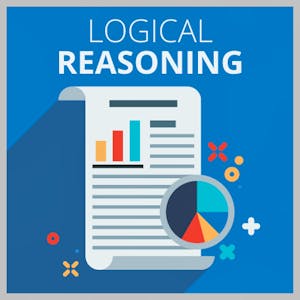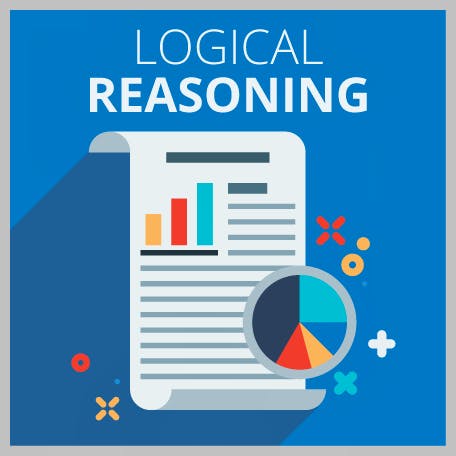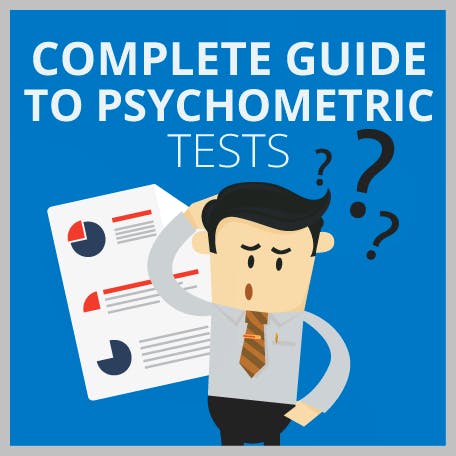The Best Logical Reasoning Practice Test Prep
Updated November 18, 2023


Logical reasoning tests are a little different to your average psychometric test.
With this type of assessment, there are many different variations so it is sometimes difficult to determine which aspect of logical reasoning you will be assessed on.
With this guide, you’ll learn the difference between inductive and deductive reasoning tests, and some tips for maximising performance.
Designed to evaluate how you interpret patterns, shapes, numbers and other data to reach logical conclusions, the assessments are used across a number of different sectors at all levels of recruitment from entry right up to managerial positions.
PRO TIP:
Visit JobTestPrep for the best online Psychometric Test practice.
Due to the varied nature of these tests, you may be asked to sit one or two different tests.
As a result, it’s important to understand what these variations actually are.
Inductive Reasoning Tests Explained
An Inductive reasoning test is a means of measuring a candidate’s ability to solve problems when given unfamiliar information.
If you are asked to complete an Inductive reasoning test, you will be assessed on your ability to reach a general conclusion based on patterns or events.
This type of logic is used frequently in day to day routines and is very useful in a workplace setting.
Applicants are provided with a set of diagrams and asked to identify a pattern or connection before deciding upon the next diagram in the sequence.
Inductive Reasoning Tests
Many employers, such as PWC, use inductive reasoning tests as part of the selection process, and while the majority of these assessments are based on the same fundamental principles, there are significant differences between one style of inductive reasoning test and the other.
Consequently, it is important that you prepare for the right one.
There are currently six providers of these tests so it is advised that you find out which company created the logical reasoning test for the recruiter if you haven’t already been informed.
Below we’ve listed six of the most common providers and included a link to some of their example tests.
- SHL
- Kenexa
- Cut-e
- Talent Q
- Matrigma
- Saville
Inductive reasoning tests are favoured by many employers because they provide an impartial measure of your capabilities and they can be used to determine your general mental abilities.
Although they do not evaluate competence in the workplace, they are a general measure of how well you are likely to perform when approaching everyday tasks.
Deductive Reasoning Tests
Within this test you will be expected to evaluate logical arguments and then draw strong conclusions based on the information and identify whether there are any discrepancies or flaws.
Candidates are required to follow a specific rule or principle which leads to a certain conclusion.
The questions that you may be asked include identifying strengths and weaknesses of an argument using a specific example or set of occurrences which will lead to a certain rule or principle.
Syllogisms is one of the most frequently used of deductive reasoning tests and in essence, is an argument which contains a major idea, a minor argument and logical conclusions.
Deductive reasoning tests can be a mix of verbal reasoning or numerical calculations which is often determined by the nature of the employment opportunity, but they are commonly found in positions advertised science, IT, engineering, software and technical design where logic and advanced problem solving skills are often required.
Diagrammatic Reasoning Tests Explained
The diagrammatic reasoning test will provide candidates with a number of diagrams containing a combination of letters or numbers.
Each of the letters will represent a rule and may appear more than once in the diagram.
It is your task to use the meanings of the numbers and follow the paths provided to solve a problem.
Although they may appear to be quite daunting and complex, so long as you complete the necessary preparation for these tests there is no reason why you can’t be successful.
The following video shows the similarities and differences between diagrammatic and inductive reasoning tests, which are sometimes bundled together and referred to as ‘logical reasoning tests’.
Inductive and Deductive Reasoning Test Tips
Step 1. They’re Role Specific
Logical reasoning tests are usually required for roles such as investment banking or technically based roles such as IT, where a high degree of logic is required.
Step 2. Keep Calm
Although it may seem obvious, try to remain as calm as possible in the test. This is particularly important for logical reasoning assessments so that you can deliver your best performance.
Ensure that you have practised thoroughly before the actual assessment day so you know what to expect and ensure that you have had plenty of sleep the night before so you are alert and ready to tackle the test.
The more practice you do the more you can perfect your technique.
Step 3. Research Inductive and Deductive Reasoning Tests
There are many different companies who create the logical reasoning tests so if you can try to find out which company it is which can help you to target your practice accordingly and understand the format and style of test.
Obtain as much information as you possibly can about logical reasoning tests beforehand, consulting online resources and of course sitting several practice tests until you feel confident about the actual assessment day.
Step 4. Understand Which Logical Reasoning Test
If your recruiter states that you are expected to sit a logical reasoning test, try to find out the type of logical reasoning; will it include inductive reasoning, deductive reasoning or diagrammatic reasoning?
This will help you target your practice more carefully and prepare for the right ones.
Step 5. Decide the Answer
Whether the test is a practice version or the real thing, it is advised that you decide the answer to the question first before looking at the multiple choice answers.
This way you can pick out the answer that makes the most sense rather than selecting the one that looks like the right answer.
Step 6. Practice Inductive and Deductive Reasoning Tests
One of the best ways to succeed in a logical reasoning test is to carry out the necessary preparatory work beforehand.
Read up on the tests, practice as much as possible and familiarise yourself with how they are carried out so you are fully prepared on the day.
Conclusion
Logical reasoning tests cover a broad spectrum of careers and there are multiple variations of the test too.
Make sure that you are fully aware of the most relevant tests for the organisation you are applying to and what type of logical reasoning assessments you will be expected to complete.
The more you practice, the more confident you will be in answering the questions on the assessment day.
Need more practice? Try practice tests from JobTestPrep.















